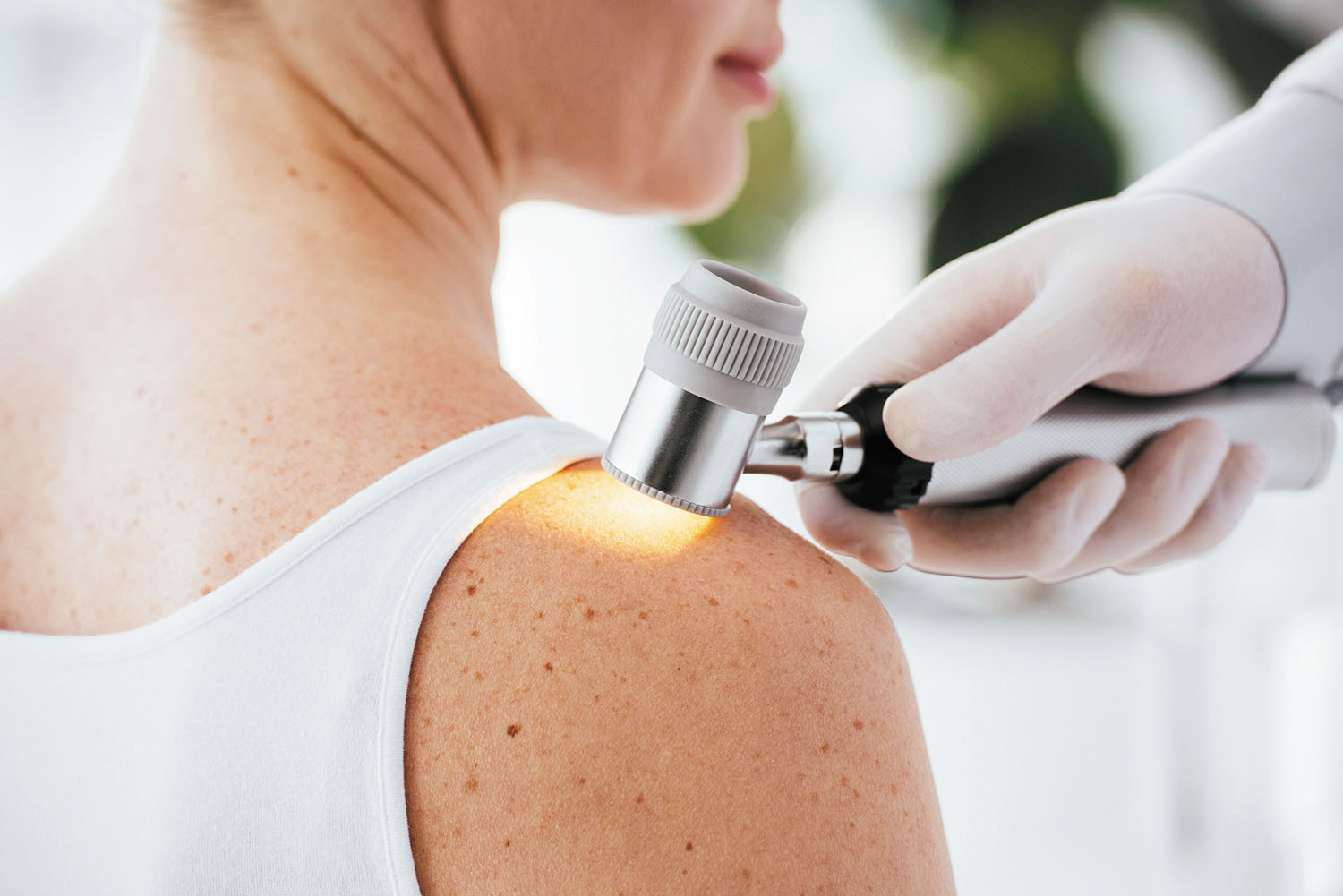Screening advice that's not just skin deep
Despite perceptions, most people don't need an annual skin cancer exam. Here's who does.
- Reviewed by Toni Golen, MD, Editor in Chief, Harvard Women's Health Watch; Editorial Advisory Board Member, Harvard Health Publishing; Contributor

After decades of public service campaigns, the message has clearly sunk in: melanoma kills. Awareness about the deadliest skin cancer — which claims 8,000 lives each year — has soared over the past two decades.
But now there's a new bulletin to absorb. Contrary to popular wisdom, the vast majority of people don't need to see a dermatologist each year to check for the malignancy. Skin checks every two to three years are sufficient for 80% of us, says Dr. Katherine Brag, a dermatologist at Harvard-affiliated Beth Israel Deaconess Medical Center.
Many dermatologists are flooded by calls from "worried well" patients who request annual skin exams they don't need, Dr. Brag says. They've paid attention to statistics indicating that melanoma is diagnosed in 200,000 Americans each year, with rates doubling between 1982 and 2011. An estimated one in 40 women will develop melanoma in her lifetime, according to the American Academy of Dermatology.
"Everyone is understandably afraid of melanoma. Even though it represents only a small fraction of diagnosed skin cancers, it accounts for more than 70% of deaths," Dr. Brag says. "It's hugely concerning — and deservedly so. But most people who get a skin check get a perfectly clean bill of health."
Watch for these melanoma signsMost melanoma lesions are found by the patient or a partner, not by a doctor. Staying vigilant is as easy as remembering the alphabet. Look for these features in body moles and see your dermatologist immediately if you notice any. A = Asymmetry or irregular shape. B = Borders that are uneven. C = Colors that vary within the same mole. D = Diameter that's larger than the width of a pencil eraser. E = Evolution or change over time in size, shape, or color. |
The case against hypervigilance
Much research reinforces Dr. Brag's approach. In April 2023, the U.S. Preventive Services Task Force — which offers science-based recommendations about disease prevention — said there isn't enough evidence to support annual melanoma screenings for people with no symptoms who are at average risk for the disease. The benefits don't clearly outweigh the risks, which include unnecessary — and potentially disfiguring — biopsies, along with higher health care costs, the task force said.
Additionally, most cases of melanoma aren't found during skin cancer screenings. More than half are self-detected — usually because they're bleeding — and women spot these cancers more often than men, according to a 2016 study in the Journal of the American Academy of Dermatology.
And deaths from melanoma don't drop when clinicians detect the malignancy during routine skin checks, either, according to a 2021 study in JAMA Dermatology. "Screenings don't necessarily improve outcomes from melanoma itself, and that's the point of a screening," Dr. Brag says.
Risk-increasing scenarios
So who can benefit from a yearly skin exam? About 20% of people, who have any of the following risk factors:
Dozens of atypical moles. Most of us have between 10 and 40 common moles, which are small, round, and smooth. Atypical moles tend to be larger, with irregular or blurred borders. If you've got several dozen, a yearly skin check is warranted, since there's a slight chance they can develop into melanoma.
Family history of melanoma and atypical moles. If a first-degree relative such as a parent, sibling, or child has had melanoma or many atypical moles, your risk rises. "When someone tells me her grandfather had melanoma at 89, that's different from telling me her mother had it at 40," Dr. Brag says. "One is a function of age and many years of sun exposure, and the other may be more familial."
Previous skin cancer of any kind. Depending on how long ago you had a skin malignancy, this risk factor may warrant getting skin checks even more frequently, such as every three or six months. Ask your doctor.
Genetic mutations or predisposition. People with BRCA gene mutations, a family history of certain inherited cancers, or dysplastic nevus syndrome (an inherited skin condition marked by unusual moles and melanomas) all face higher melanoma odds.
Organ transplantation or inflammatory bowel disease. Both of these scenarios can involve taking immune-suppressing drugs that can increase patients' chances of developing skin cancer.
History of blistering sunburns. Three sunburns before age 15 substantially increase your melanoma risks.
Tanning bed use. Multiple tanning bed sessions—especially before age 20—dramatically increase melanoma risks.
Image: © LightFieldStudios/Getty Images
About the Author

Maureen Salamon, Executive Editor, Harvard Women's Health Watch
About the Reviewer

Toni Golen, MD, Editor in Chief, Harvard Women's Health Watch; Editorial Advisory Board Member, Harvard Health Publishing; Contributor
Disclaimer:
As a service to our readers, Harvard Health Publishing provides access to our library of archived content. Please note the date of last review or update on all articles.
No content on this site, regardless of date, should ever be used as a substitute for direct medical advice from your doctor or other qualified clinician.
















